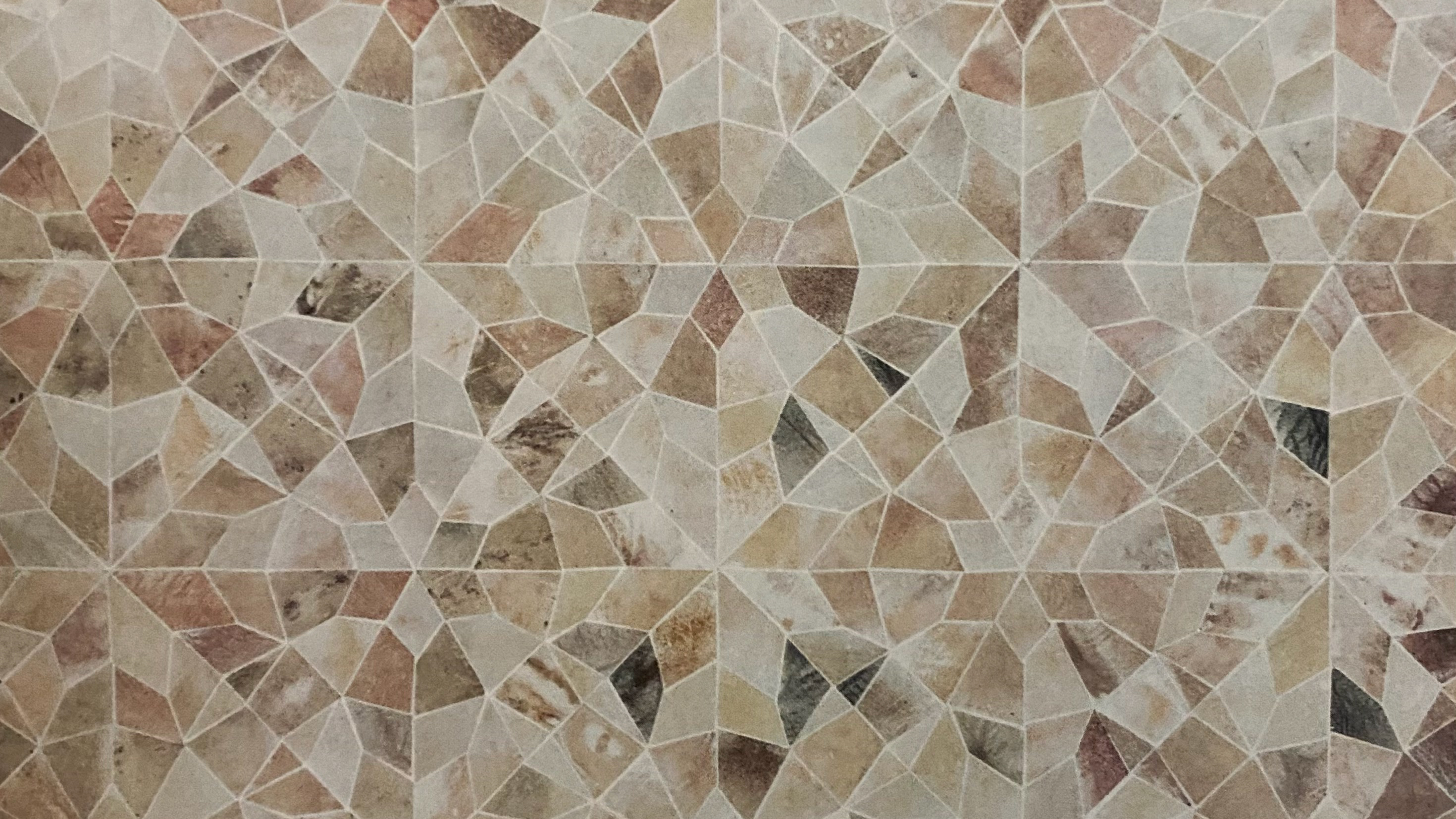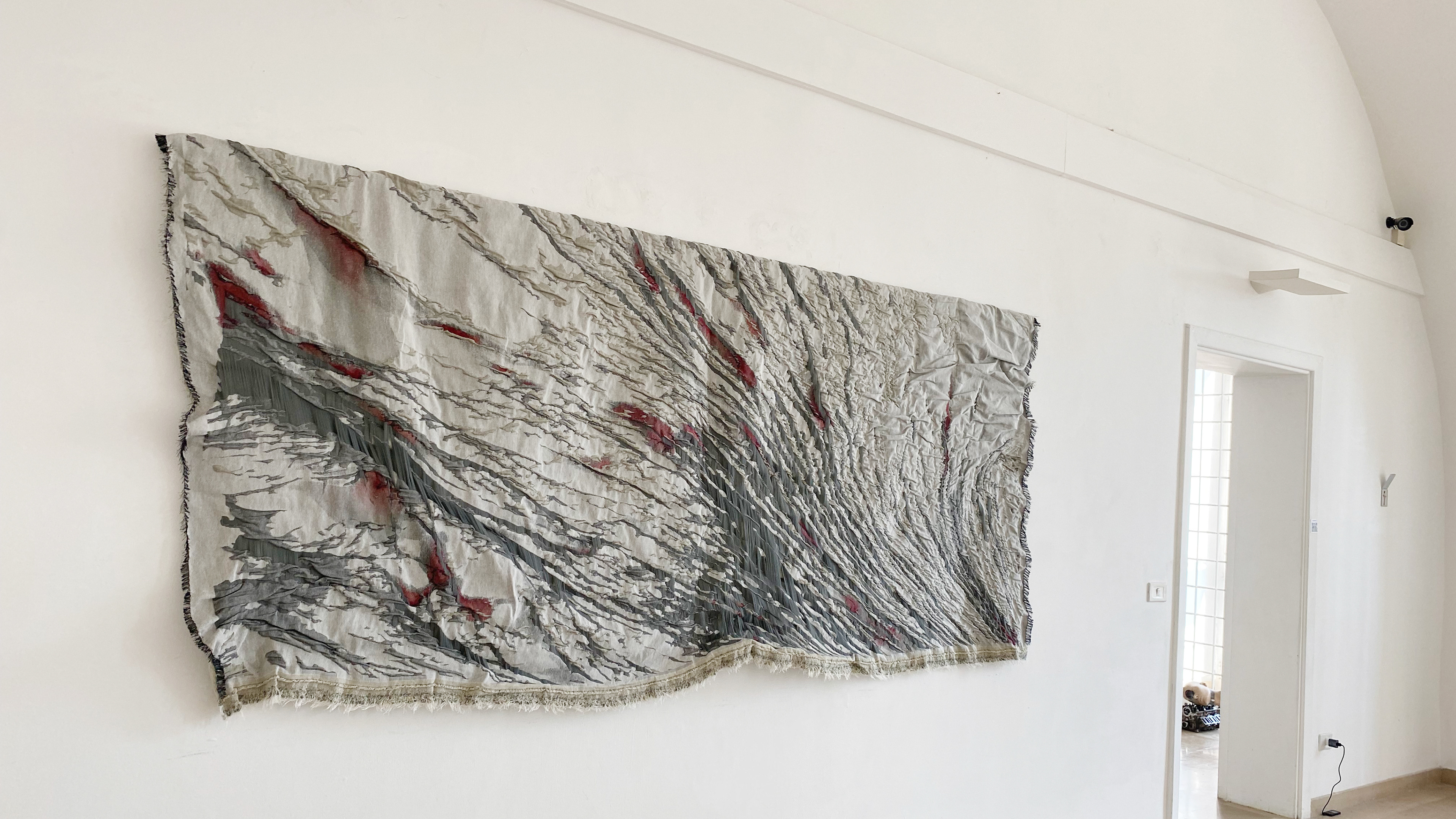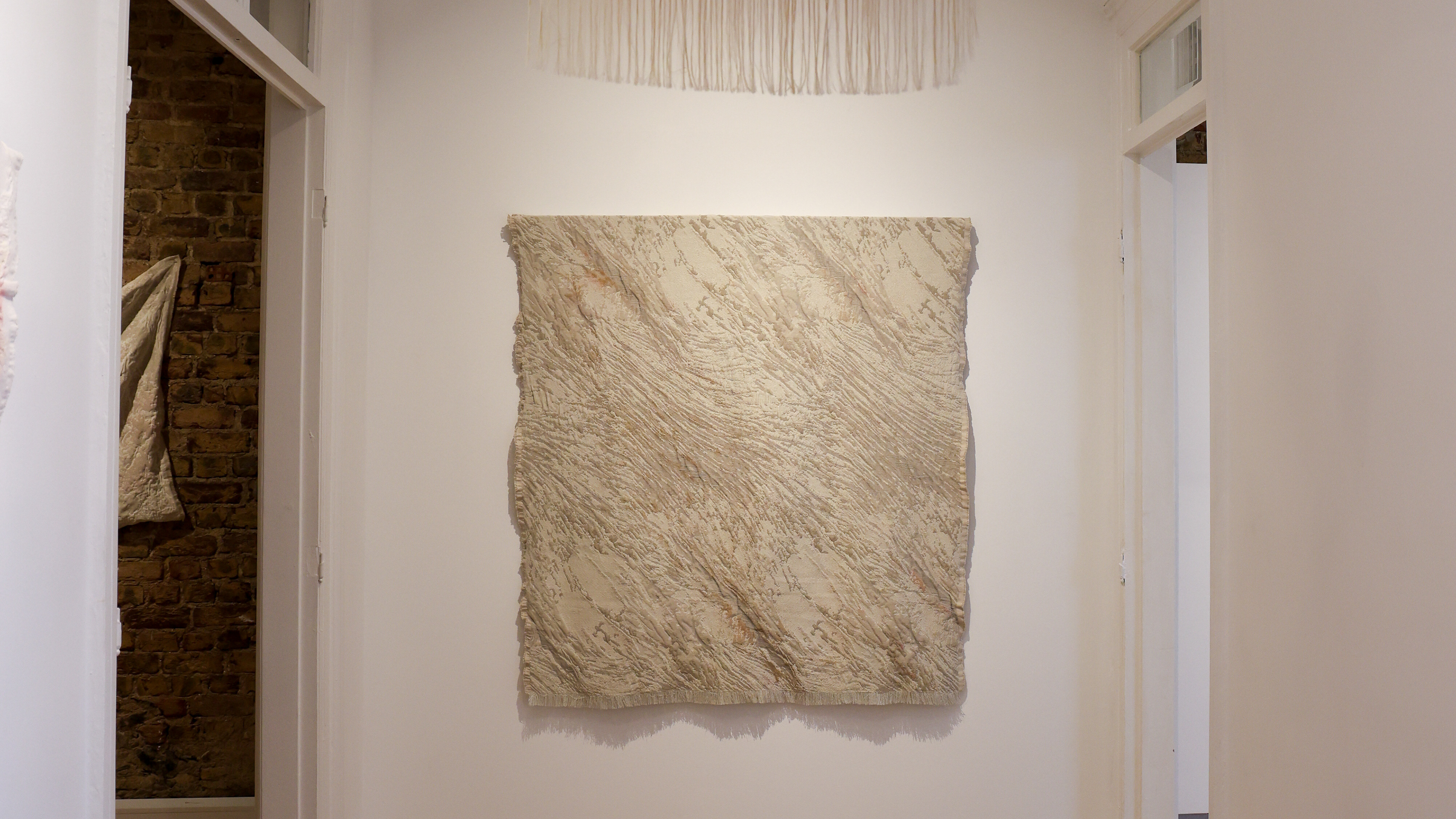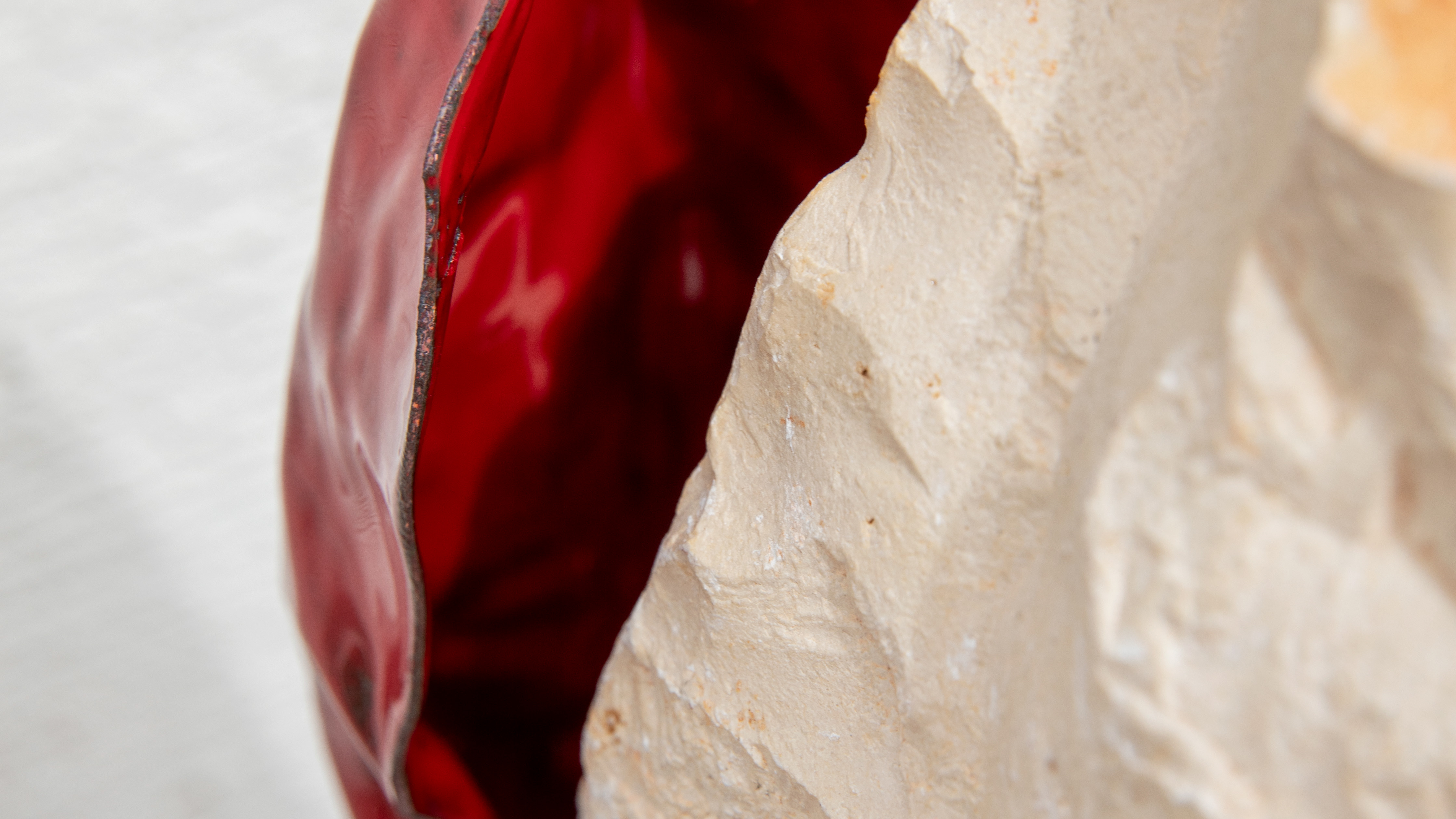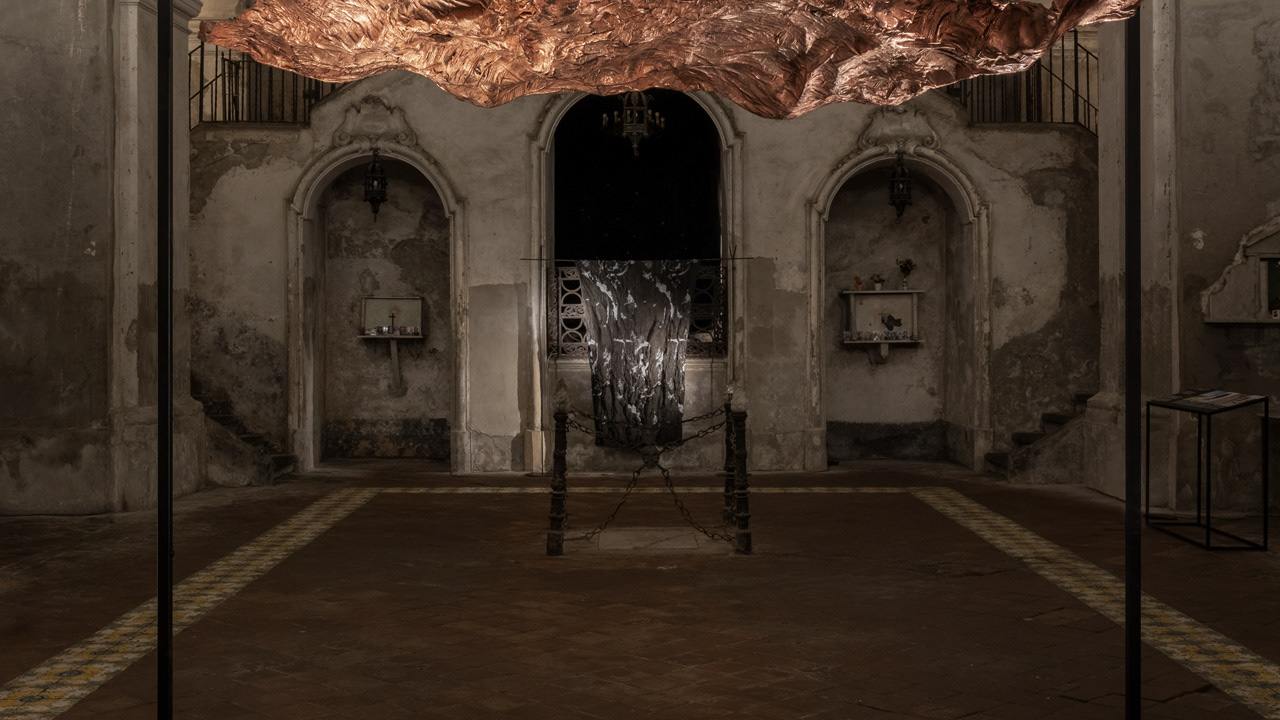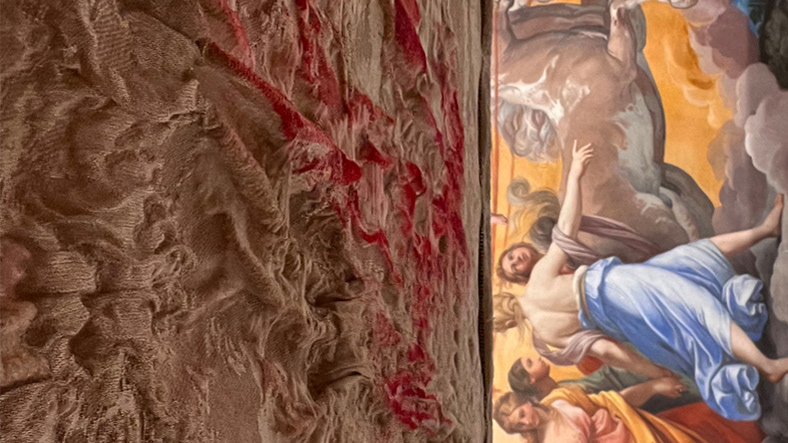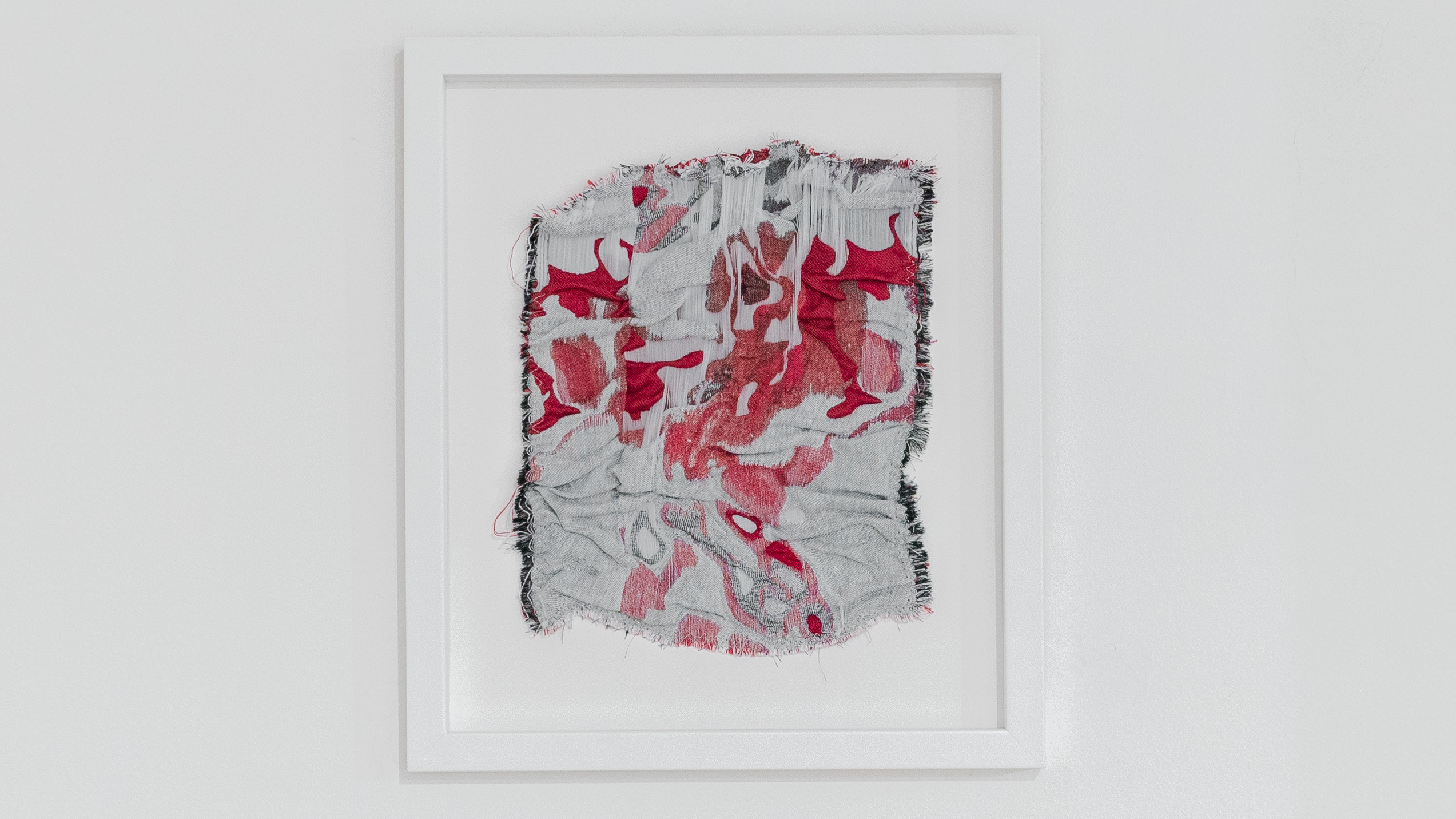Curated by Domenico de Chirico
In pursuing her goal of studying in-depth the plurality of increasingly new and surprising forms—through perspective, the construction of Jacquard looms made with so-called fleet weft shots and the consequent three-dimensionality, primary elements that generally characterize the composition and narrative of her art—Caterina Roppo generates an extraordinary yet highly personal visual hypotaxis. Here, the reverberations of the vastest liminal constellations materialize to exhibit themselves freely through a solemn inherent scheme that, in turn, strives for all things to be manifestly palpable.
Through the continuous exploration of abstract concepts and deliberately based on the sensible assumption that human perception is strongly influenced by certain visual and emotional stimuli, Roppo, driven by a strong desire to explore the world in order to better understand it, formulates a series of hypotheses that contribute to grasping human, social, or natural phenomena of various kinds, thus generating a sequence of questions that should stimulate viewers and invite them to continuously consider new reading perspectives on multiple particularly complex themes.
Among these, there is certainly that related to trauma—whose origin is from the Greek τραῦμα (-ατος) and whose meaning in Italian corresponds to the word "wound". Indeed, the enduring project called "Trayma", born from a dramatic event experienced by Roppo herself, following which a serious post-traumatic stress disorder was unleashed, inevitably marked the beginning of a long period of research on the issue of punctures, with an extension ranging from natural to architectural environments.
Thus, amid enchantments and disillusionments, carnality and vulnerability, what follows is an authentic fresco, simultaneously abstract and corporeal, corroborated by outlines and perspectives that give rise to a particular aesthetic synergy, consisting of an irrefutable visual reality juxtaposed with the enigmatic hemisphere of the unconscious.
Masterfully managing to give shape to that ancestral process whereby substance often acts on both evergreen creativity and the neuralgic and fragile perception of the subconscious, the artist soon realizes that she has no fear in telling her story because, fundamentally, her psychic pain is the same pain that, from the beginning, runs through the whole world.
And so, surpassing the limits of liminal space—of that arcane place made of transitions, changes, and concatenations, real or fictitious, which usually generates a sense of nostalgia or even spleen— Roppo invites us to critically look at her works in the hope that all of us can discern within them something wonderfully new, just as she does herself when she stands naked before the presence of that before and after that, in the succession of events, suffocate every flow that openly breathes on the world, cadencing it. And thus, taking for granted both that memory constitutes the catalyzing source of creativity and that the activation of the creative process corresponds to the engine of emotional elaboration, with "Being Worldless" we witness the culmination of that crucial moment in which the artistic gesture makes of the wound—although only after having symbolized it—its inextricable banner.
Oscillating between the instant and eternity, this stage—made of intense and sinewy weaves, slippery surfaces, metallized effects, and a silvery luminous spectrum, almost livid yet abyssal, sometimes crossed by filaments of blood-colored, where the represented fragility seems to illustrate the authentic nature of trauma and the interdependent relationship of forces between the event and the subject experiencing it—stimulates the chords of a creative tension that, screaming, silently directs itself towards a stage of unexplored timelessness, still completely untold.
And then, appealing to the Latin phrase gutta cavat lapidem, this possibility of elaborating and reclaiming one's own emotional experience, achievable only drop by drop, seems to evoke the words elegantly phrased by the Polish poet Wisława Szymborska in her fearless poem titled "Torture", according to which: "[...] Among these landscapes the soul wanders, / disappears, returns, approaches, withdraws, / to itself strange, ungraspable, / now certain, now uncertain of its own existence, / while the body is there, and there, and there / and finds no shelter".




